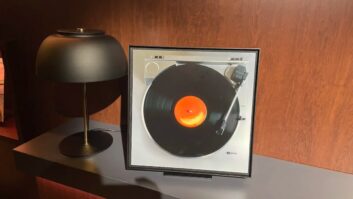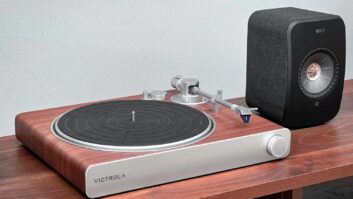I’ve been reading “Vinyl Makes A Comeback” stories for some years now. Trouble was, vinyl hadn’t made a comeback. The statistics didn’t support the anecdotal evidence, which was “shovel-ready” at best.
At least until now.
The Recording Industry Association of America (RIAA) issued statistics that support the headlines. Last year’s retail sales of vinyl LPs and EPs (long-play and extended-play records for those born in the digital era) were up for the second consecutive year, rising 124 percent in units to 2.9 million and 148 percent in dollars to $56.7 million. In 2007, sales were up 36.6 percent in units and 46.2 percent in dollars.
Now keep your bell bottoms on. Vinyl LPs and EPs accounted for only 0.007 percent of the music industry’s 2008 volume of $8.48 billion in combined physical and digital sales. That share is up from the previous year’s 0.002 percent, partly because the music industry contracted by an astounding 18.2 percent in 2008. On a dollar basis, sell-through is close to what it was in 1990. On a unit basis, sell-through is what it was in 1999. In contrast, digital downloads accounted for almost 30 percent of music-industry sales.
The recent rebound, in fact, is from abysmally low levels. In 2005, dollar volume hit a 12-year low of $14.2 million, and 2006’s unit volume of 900,000 was the lowest in at least a quarter of a century. And the market is nowhere near the 1.69 billion LPs and EPs sold in 1983, the earliest year for which I have figures.
These statistics don’t include vinyl singles, which shrank 27.4 percent in 2008 to a minuscule $2.9 million. Add them into the mix, and vinyl’s dollar volume is a notch below 1997’s $59.7 million. (These are not inflation-adjusted dollars, by the way.)
Although 2008 sales don’t amount to a groundswell, they are significant. The last time vinyl enjoyed consecutive growth years was in the mid 1990s. In 1996, unit and dollar sales grew for the fourth consecutive year to 2.9 million units (also the 2008 level) before declining again for a decade.
On top of that, the most recent upswing was significant enough to entice Best Buy to consider a rollout of vinyl to all of its stores after a successful 100-store test, as reported in a recent New York Post story. Music companies and artists have also taken notice, having issued new releases and catalog material in vinyl in recent years. That will contribute to greater demand.
Vinyl, of course, has always been popular with audiophiles and DJs, but what accounts for vinyl’s spike this decade? Some of the increased demand is coming from the iPod generation, which rediscovered parents’ vinyl collections and heard songs available only on vinyl. That piqued their interest in the medium. “In an increasingly digital era, vinyl albums offer fans a more tangible way to connect with their favorite artists and are likely appreciated for their artwork and collectability as well,” says Joshua Friedlander, the RIAA’s VP for research and strategic analysis.
Today, Friedlander adds, going vinyl no means going without a portable digital version of a song, thanks to the proliferation of vinyl-ripping USB turntables. Some vinyl albums also come with download codes so that consumers can easily obtain a digital copy without owning a USB turntable.
Cultural mood swings are also playing a role. “It’s hip to have vinyl,” says Sixth Avenue executive Tom Galanis.
Although the numbers aren’t in yet for the first half of 2009, “anecdotally it seems significant gains are continuing in ’09,” said Friedlander.
To me, it remains to be seen whether the surge will be long-lasting or turn out to be nothing more than a passing fad, like a ’70s-era fondue party. The interest in vinyl might reflect nothing more than the nation’s odd fascination with everything from the decade from hell, including bell bottoms, Afro hair styles, ’70s-themed TV shows, and ‘70s economic policies.
What say you?













